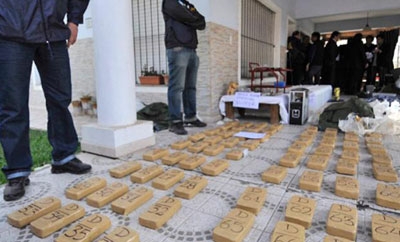A rise in drug-related violence in northern Argentina is reportedly the result of a “turf war” between five major gangs, one indication that the city of Rosario is increasingly becoming an organized crime hub in its own right.
According to authorities, Rosario has witnessed a significant increase in homicides over the last three years — from 119 in 2010 to 188 last year — as gangs battle for control of a drug trade worth over $60 million a year, reported La Nacion. That increase seems set to continue, with the city registering 165 homicides up to September this year.
According to La Nacion, the real number of drug-related homicides may actually be higher, as the statistics only include victims found dead, not those who later died in hospitals.
The violence has apparently been sparked by a weakening of the city’s dominant gangs — “Los Monos” (The Blondes) and the Alvarado gang — creating a power vacuum which other groups have sought to fill. Officials estimate that Rosario’s major drug gangs earn up to $35,000 per day and expect homicides to keep rising, reported La Nacion.
Argentina is currently the world’s third-largest exporter of cocaine, with much of the product destined for European markets.
InSight Crime Analysis
Rosario is located at the end of the famous Ruta 34 highway, used by traffickers to move cocaine from Bolivia down to Argentina’s major cities.
The rise in Rosario’s drug-related violence is likely tied to the city’s emergence as a production and trafficking center, a development that could mean local gangs are poised to move from micro-trafficking into more transnational crime.
Earlier in September, authorities uncovered a drug laboratory near Rosario described by the country’s security minister as the largest yet found in Argentina, seemingly demonstrating an expansion in local production. This year more than 22 kilos of cocaine were discovered on Ruta 34 near the city, and accusations of drug-related corruption have long been leveled at local police.
SEE ALSO: Coverage of Argentina
In recent years, Argentina has been a popular destination for drug traffickers from elsewhere in the region, either to coordinate operations or escape attention in their homelands, and a recently uncovered Colombian-led organization exporting cocaine to Spain was believed to have Rosario links.
It is possible that local Rosario gangs have become involved with larger drug trafficking organizations, as seen in countries such as Mexico. If so, this dynamic could be connected to the recent violence in the city.

